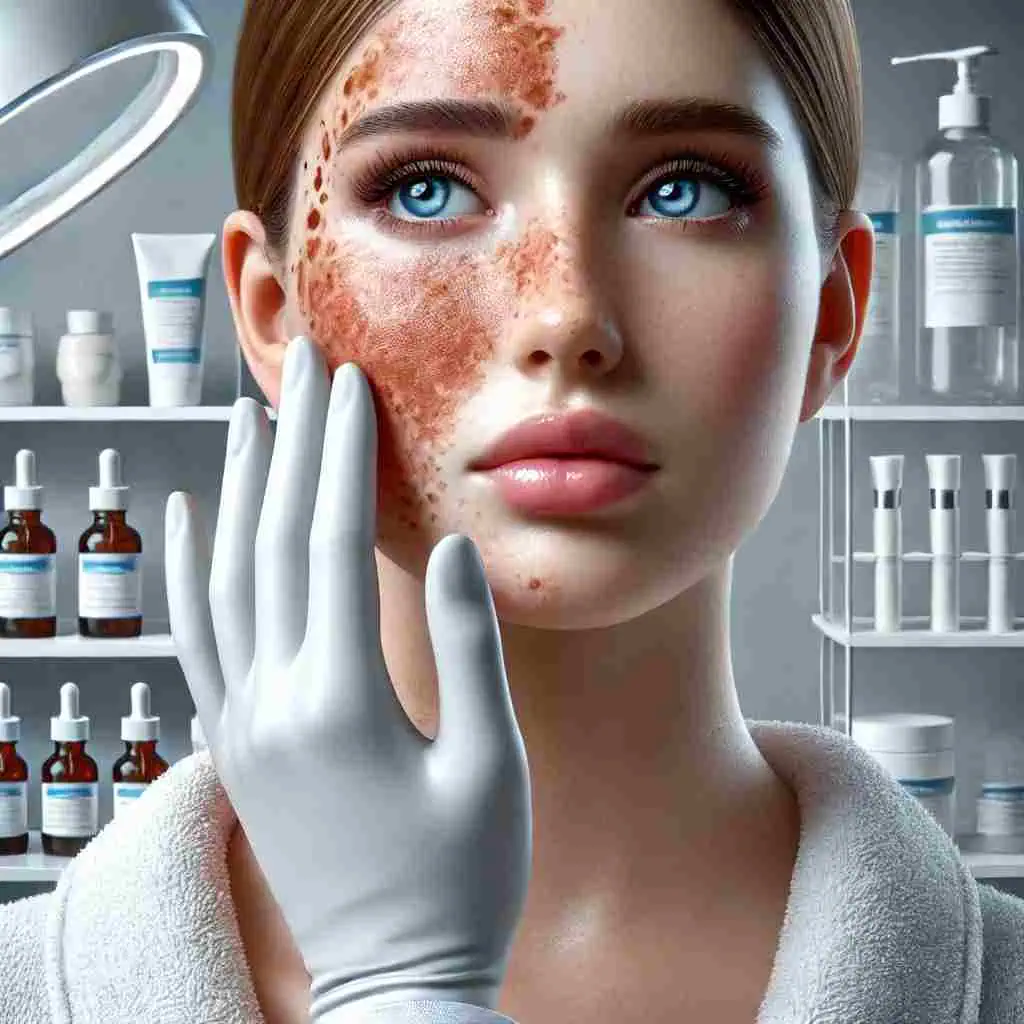Understanding Hyperpigmentation: Causes, Treatments, and Prevention Strategies

Hyperpigmentation is a common skin concern characterized by darkened patches or spots that appear due to excess melanin production. Although it is generally harmless, it can be a source of frustration and affect one’s self-confidence. Recognizing the underlying causes, adopting effective prevention strategies, and seeking professional treatments can help manage and reduce hyperpigmentation. This guide will explore hyperpigmentation, why it occurs, and how to achieve a more even complexion.
What Is Hyperpigmentation?
Hyperpigmentation refers to areas of the skin that have become darker than the surrounding tissue. This can happen anywhere on the body, but it’s particularly noticeable on the face, hands, and neck. While anyone can experience hyperpigmentation, factors such as sun exposure, hormonal imbalances, and inflammation can increase the likelihood of developing these dark spots. By understanding these triggers, you can take proactive steps to minimize their impact and maintain a clearer complexion.
Certain forms of hyperpigmentation, like age spots and melasma, are directly linked to ultraviolet (UV) exposure. To delve deeper into the sun’s role in skin discoloration, you may find it helpful to review our article on Preventing and Treating Sun Damage and learn how proper sun protection can prevent future dark spots.
Common Causes of Hyperpigmentation
Hyperpigmentation can arise from various sources, each affecting the skin uniquely. One of the most common culprits is excessive sun exposure, which stimulates melanin production and leads to sunspots. Hormonal changes, such as those occurring during pregnancy or due to oral contraceptives, can cause melasma—large, irregular patches of discoloration on the face. Additionally, inflammation or injury to the skin, like acne breakouts or eczema flare-ups, can leave behind dark marks after healing.
Environmental factors also play a role. Individuals living in sunny climates may notice more pronounced hyperpigmentation issues. For guidance on adapting your skincare routine to local weather conditions, explore A Guide to Protecting Your Skin in LA’s Unique Climate and learn how humidity, pollution, and temperature can influence your skin’s appearance.
Preventing Hyperpigmentation
Prevention is crucial, and a holistic approach often yields the best results. Incorporating broad-spectrum sunscreen with at least SPF 30 into your daily routine is essential, as UV rays remain the leading cause of excess melanin production. Wearing protective clothing, seeking shade during peak sun hours, and reapplying sunscreen every two hours are simple yet effective measures.
In addition, maintaining a consistent skincare routine tailored to your skin type can help prevent and manage hyperpigmentation. For instance, individuals prone to breakouts should consider strategies discussed in The Ultimate Guide to Acne Treatments to minimize post-inflammatory dark spots. Managing chronic skin conditions like eczema or rosacea—explored in Eczema Management Tips and Understanding Rosacea—can also reduce the risk of irritation-related hyperpigmentation.
Professional Treatments for Hyperpigmentation
Professional treatments can provide more significant improvements when at-home measures aren’t enough. A board-certified Los Angeles dermatologist often administers chemical peels, microdermabrasion, and medical-grade topical creams to lighten dark patches gradually. For more advanced cases, laser therapies and intense pulsed light (IPL) treatments can target deeper pigmentation concerns, stimulating skin renewal and promoting a more even skin tone.
At Dr. Janet Vafaie’s clinic, our Cosmetic Dermatology services offer a variety of cutting-edge treatments, including lasers and resurfacing procedures. To learn about technology-driven options, consider reading Top Laser Therapies in Dermatology Today and exploring how modern lasers can effectively diminish hyperpigmentation.
Integrating Hyperpigmentation Treatments into Your Routine
Combining professional interventions with a well-structured daily skincare routine is often the key to long-term success. Incorporating products rich in antioxidants and brightening agents like vitamin C, niacinamide, and licorice root can support professional treatments and maintain improvements between appointments. Consistent exfoliation, proper moisturization, and dedicated UV protection are vital for sustaining results over time.
If you’re also concerned about other signs of aging, such as fine lines or loss of volume, treatments outlined in Anti-Aging Strategies may complement your hyperpigmentation regimen, delivering an overall refreshed and youthful complexion.
When to Consult a Dermatologist
While over-the-counter products and lifestyle modifications can help, persistent or severe hyperpigmentation often benefits from professional evaluation. A dermatologist can identify underlying causes, recommend targeted therapies, and monitor your progress to ensure the best possible outcomes. At Dr. Janet Vafaie’s clinic, our team can guide you through medical treatments, ranging from Medical Dermatology solutions for underlying conditions to advanced procedures like Dermatologic Surgery if necessary.
Consulting with a qualified dermatologist ensures that you receive personalized recommendations and access to the most effective solutions, improving the likelihood of achieving and maintaining a clearer, more even-toned complexion.
Frequently Asked Questions
How long does it take to see results from hyperpigmentation treatments?
Improvement varies depending on the treatment and severity of the condition. Mild discoloration may fade within a few weeks, while more stubborn spots can take several months. Patience and consistency in following your dermatologist’s instructions are key.
Can hyperpigmentation return after treatment?
Yes, hyperpigmentation can recur if the underlying triggers, such as sun exposure or inflammation, persist. Consistent sun protection and proper skin care can help maintain results over the long term.
Are hyperpigmentation treatments safe for all skin types?
Many treatments are safe across various skin types, but it’s essential to consult with a dermatologist. They will recommend options tailored to your skin concerns and type, ensuring effective and safe outcomes.
External Resources
- American Academy of Dermatology: Hyperpigmentation: Tips for Treating
- National Institutes of Health: Skin Hyperpigmentation
Taking the Next Step
Addressing hyperpigmentation can be a transformative journey, allowing you to regain confidence and feel comfortable in your skin. From daily preventive measures to cutting-edge laser therapies, numerous paths exist to achieving a more balanced complexion. You can effectively manage and reduce hyperpigmentation by partnering with a qualified dermatologist and combining professional treatments with a consistent, personalized skincare routine.
Contact us today at Dr. Janet Vafaie’s clinic to schedule a consultation and discover the best strategies for achieving even, radiant skin.
